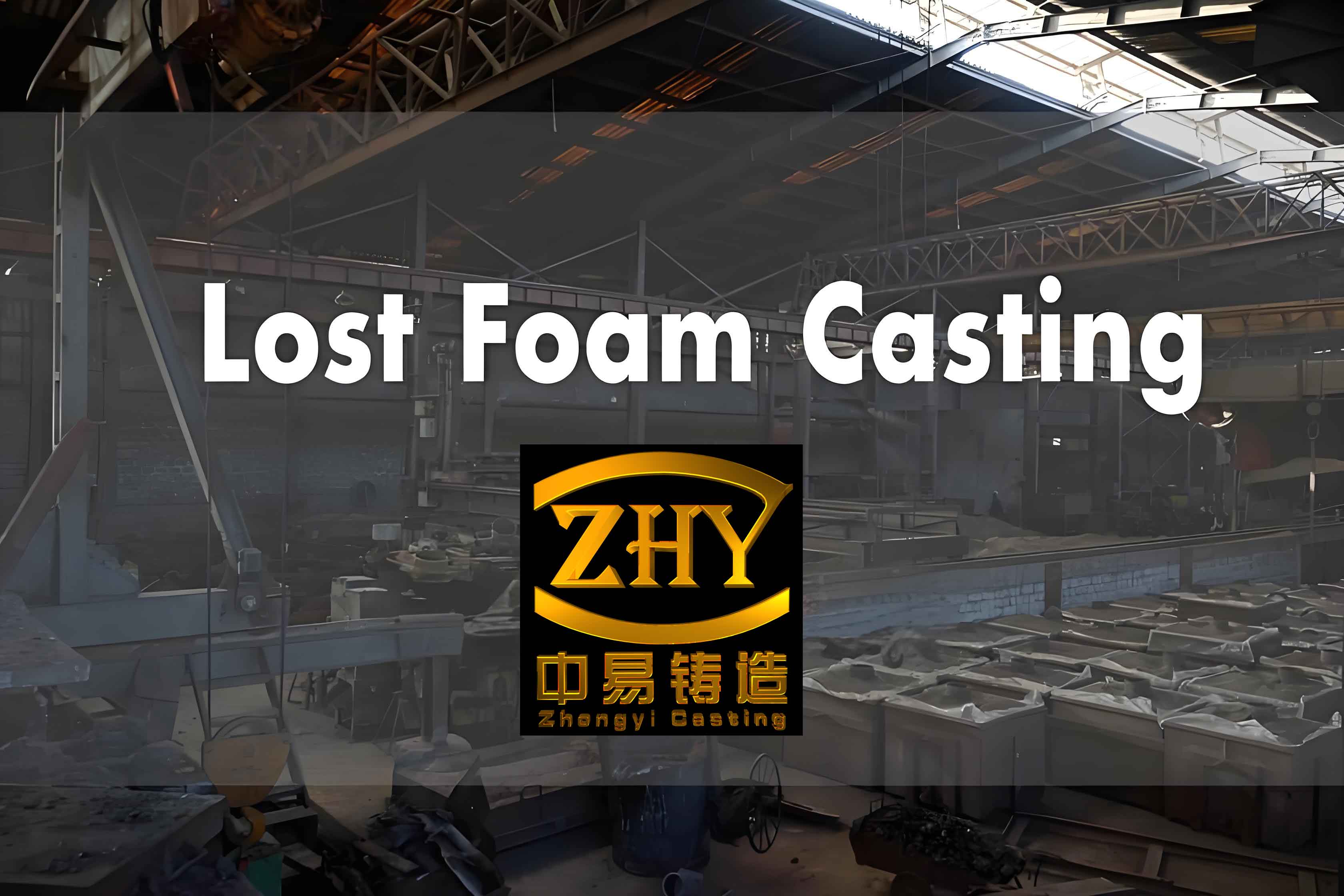Abstract:
Due to the thickness of QT500-7 ductile iron hubs in lost foam casting, casting defects including shrinkages and cavities are prone to occur during the casting process. Through the analysis of the casting structure, targeted optimization was carried out at positions prone to shrinkages and cavities by adjusting the gating method and pouring process to ensure meeting customer requirements. Meanwhile, hardness, elongation, and other properties were guaranteed through composition control.

1. Introduction
Lost foam casting is an advanced casting technology that has been widely applied in the production of various castings due to its advantages of near-net-shape casting, high dimensional accuracy, and good surface quality. This paper focuses on the process design of QT500-7 ductile iron hubs using lost foam casting, aiming to overcome casting defects such as shrinkages and cavities and ensure product quality.
2. Casting Structure Analysis
The hub casting material is QT500-7 ductile iron, with a hardness (HB) requirement of 170-230 after normalization and tempering. The average wall thickness of the casting is 12mm, the mass is 120kg, and the contour dimensions are φ556mm×414.5mm. The hub casting must be free from defects such as shrinkages and cavities.
Considering the特殊性of the lost foam casting process and the sand filling process, the placement of the casting must be with the large circular surface opening upwards to ensure smooth sand filling. The cross-sectional view of the hub casting and schematic diagrams of pouring positions under different processes.
3. Process Design and Analysis
3.1 Pouring Position Selection
Based on the analysis of different pouring positions, the top pouring position causes severe backsplash due to the rapid combustion of the pattern and the release of a large amount of gas. The outer circumference pouring of the middle flange face and the inner circle pouring of the middle part have a lower probability of generating shrinkages and cavities in the casting body, with defects mainly concentrated at the top of the casting, which can be removed by machining. Therefore, these two pouring methods were selected for testing.
3.2 Process Design for Two Schemes
3.2.1 Outer Circumference Pouring of Middle Flange Face
The cross-sectional area of the gating system, the number of ingates, and the arrangement of risers were designed based on the pouring method. The final pouring system.
3.2.2 Inner Circle Pouring of Middle Part
Similarly, the cross-sectional area of the pouring point, the number of ingates, and the arrangement of risers were designed for this pouring method. The pouring system for inner circle pouring at four points in the middle.
4. Pouring Process Design
Based on the process parameters of ductile iron castings, the pouring temperature was determined to be 1450-1490°C. The vacuum degree was determined to be within the range of -0.06 to -0.08 MPa to ensure that the molding sand was tightly compacted without causing sand burning on the casting surface. Film covering was necessary, and the pressure holding time was initially set to 8-10 minutes, preferably as fast as possible to ensure the production cycle without causing box swelling.
5. Experimental Scheme
5.1 First Experiment
Three castings were produced using each of the two combined processes, with pouring temperatures ranging from 1460 to 1500°C, a vacuum degree of -0.06 to -0.08 MPa, and pressure holding times of 8, 9, and 10 minutes, respectively. After casting, surface defects and internal defects were observed and analyzed. The results showed that the outer circumference pouring of the middle flange face caused wrinkles and shrinkages, while the inner circle pouring of the middle part was normal. Therefore, the outer circumference pouring scheme was eliminated, and the inner circle pouring scheme was adopted.
5.2 Second Experiment
To address the issue of sand burning on the casting surface, parameters such as vacuum and pressure holding were adjusted and tested. Nine castings were poured using the inner circle pouring method at four points in the middle, with a pouring temperature of 1460-1480°C, a vacuum degree of -0.06 to -0.08 MPa, and a pressure holding time of 8 minutes. The pouring process was smooth without any box swelling. After cleaning, no sand burning was observed on the castings. Dissection revealed no defects such as shrinkages, cavities, or insufficient pouring. Subsequent small-batch production and processing verification confirmed that the castings met the requirements.
6. Chemical Composition Control
After multiple experiments, the control ranges for the content of each element were finally determined to ensure the nodularization grade and hardness of the molten iron, as shown in Table 1. Graphitized carburant was used as the melting carburant, which contained less impurities.
| Element | Content Range (% wB) |
|---|---|
| C | 3.4-3.8 |
| Si | 2.4-2.8 |
| Mn | 0.35-0.5 |
| P | <0.08 |
| S | <0.03 |
| Cu | 0.30-0.35 |
| Fe | Balance |
Table 1: Chemical Composition of QT500-7 Ductile Iron Hub
7. Conclusion
(1) The QT500-7 ductile iron hub was successfully prepared using the inner circle pouring method at four points in the middle and increasing the size of the risers on the top. The specific process parameters are as follows: pouring temperature of 1480-1500°C, vacuum degree of -0.06 to -0.08 MPa, film covering, pouring time of 46-50 seconds, pressure holding time of 8 minutes after pouring, and nodularization time of 9-10 minutes per packet of molten iron.
(2) The hardness (HB) of the QT500-7 ductile iron hub is 170-200, the elongation rate is 7%-10%, and the nodularization grade is 1-2.
